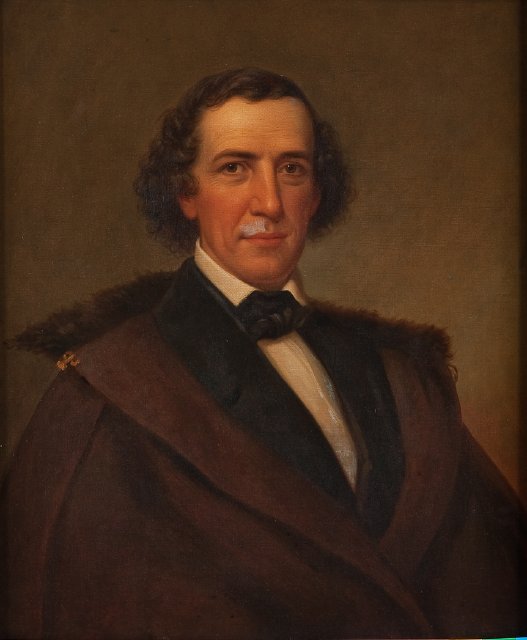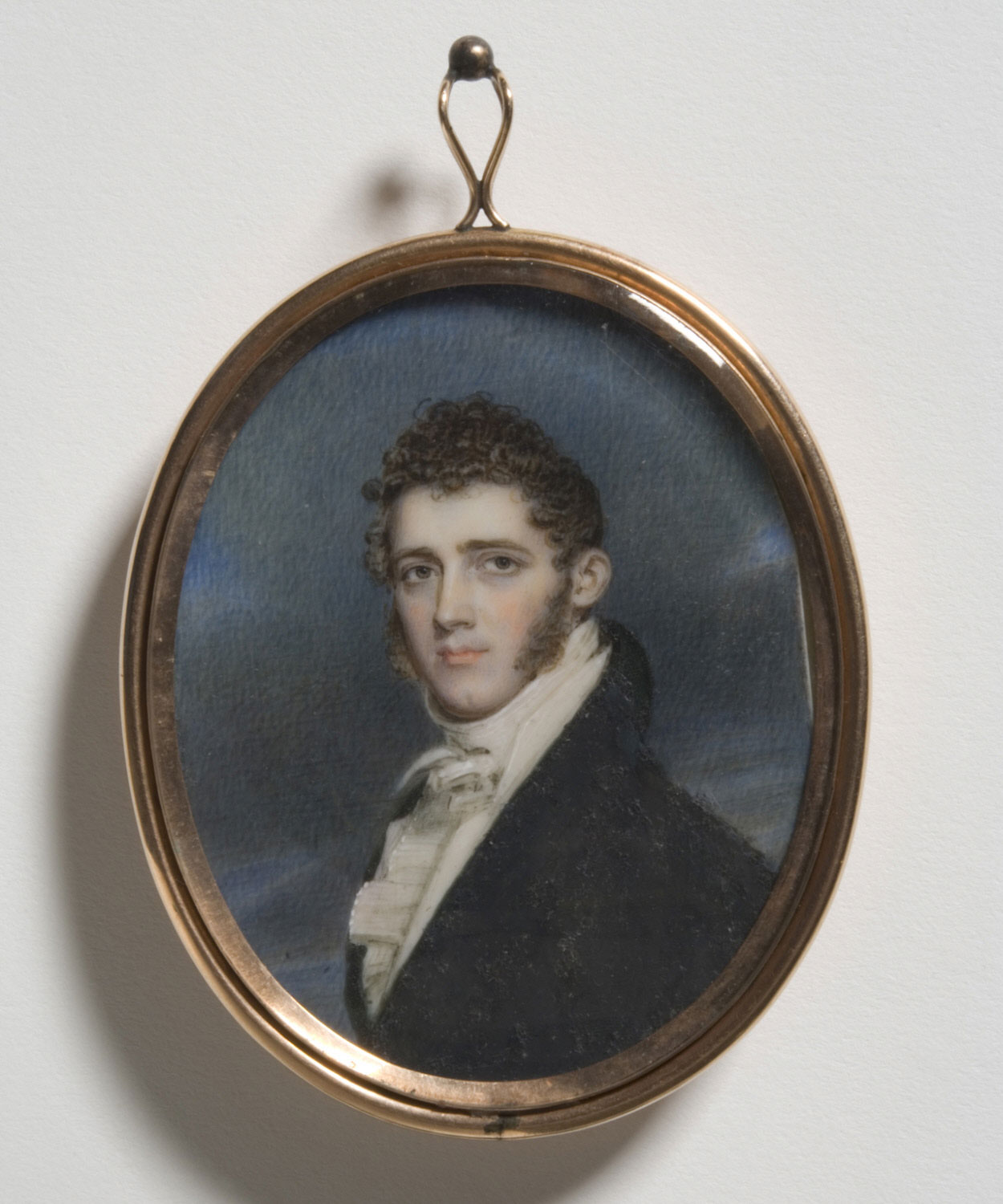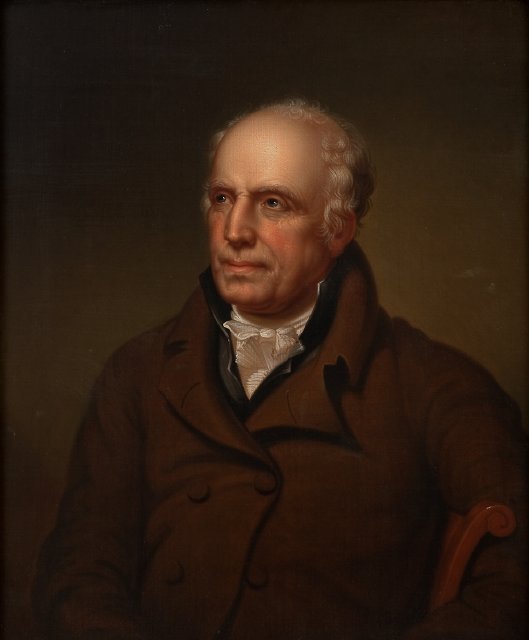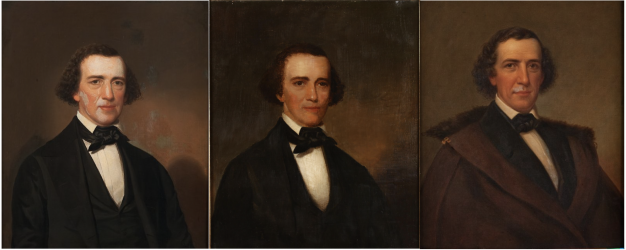The Many Portraits of Robert Patterson (continued)
This is the second post of a two-part blog. Read part one here.
In 1896, the American Philosophical Society acquired its second portrait of Robert Maskell Patterson (1787-1854) from a descendant. This one was by the artist James Reid Lambdin. The family, dissatisfied with other portraits of Patterson, including the one painted by Samuel F. Dubois, asked Lambdin to paint a portrait combining the best features of the existing portraits. It appears that Lambdin copied one or both of the portraits by Dubois (pictured above, left) and Thomas Sully (pictured above, center), as the pose, hairstyle, black suit, and cravat are the same, although Lambdin added a brown, fur-trimmed coat. Lambdin also painted a portrait of Patterson for the University of Pennsylvania. Patterson’s son stated that “some others who knew my father were gratified both with the likeness and the artistic merit of the portrait. The older children did not share this opinion."

Together, the three APS portraits of Patterson provide an interesting study of mid to late nineteenth-century portraiture. They reveal how subjective portraits were for both artists and audiences. The family never seemed pleased with how artists represented the subject despite commissioning artists who worked in different styles. Patterson appears quite different in all three of the APS portraits. Further, all three of the portraits owned by the APS are post-mortem portraits, or paintings painted after the subject’s death. These portraits were memorials to a beloved family member, reminding us of the powerful role portraiture played in preserving likeness and memory – even when these were contested within the family. This also means that we cannot know what Patterson himself thought of these different representations.

Patterson was painted many times-- at least three times by Dubois, once by Sully, and twice by Lambdin. He was also painted as a young man in a miniature by Benjamin Trott, now in the collection of the Philadelphia Museum of Art. Most of the portraits were painted for various institutions, who collected portraits of their founders or important benefactors and members to hang in esteemed portrait galleries. Portraits are often thought of primarily as family documents, but institutions were important to the commissioning and display of portraiture as well. Who institutions choose to remember through portraiture can tell us about institutional priorities.

Sometimes institutional and family histories overlap. The Patterson family was important in the early history of the APS, so it makes sense that the APS has so many Patterson portraits. Patterson’s father, Robert Patterson (1743-1824), was also an APS member (elected in 1783) and APS President (1819-1824). Patterson, Sr. was a mathematician and astronomer who devised a new method of calculating longitude. He taught his method to Meriwether Lewis, allowing Lewis and William Clark to record their famous expedition. Patterson was also an original Trustee of Charles Willson Peale’s Philadelphia Museum, which was temporarily in the APS’s Philosophical Hall, and donated a paddlefish specimen to the Museum – considered its founding donation. The APS also owns a portrait of Robert Patterson, Sr. by Rembrandt Peale (son of Charles Willson Peale). Do you see a family resemblance between father and son?
Which of the many portraits of the Robert Pattersons is your favorite?


